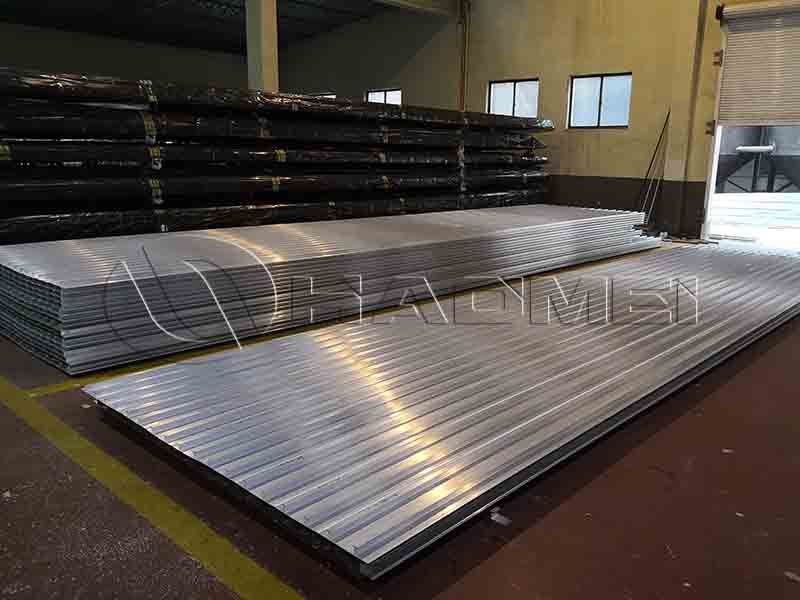How to Reduce Welding in Shipbuilding
In shipbuilding, welding processes are often called "the stitching technology of ships," directly determining the strength, safety, and service life of hull structures. As lightweight and high-speed development become key trends in modern shipbuilding, aluminum alloys, with their advantages of low density, corrosion resistance, and high strength, are gradually replacing traditional steel and becoming the core construction material for small and medium-sized high-speed vessels, yachts, and specialized vessels.

Aluminum alloy welding, a critical step in the manufacture of aluminum alloy ship structures, requires careful attention to welding wire selection and weld control, impacting not only weld quality but also shipbuilding costs and production efficiency.
Unlike steel welding, aluminum alloy welding exhibits characteristics such as a high melting point of the oxide film, high thermal conductivity, and a large linear expansion coefficient. This makes the selection of aluminum welding wire crucial to welding success. Improperly matching the welding aluminum wire can lead to defects such as porosity, cracks, and lack of fusion, at best. At worst, it can reduce the load-bearing capacity of the hull structure, posing a safety hazard. Currently, aluminum welding wires commonly used in shipbuilding can be divided into the following categories:
1. Pure aluminum welding wire
The greatest advantages of pure aluminum welding wire are its excellent plasticity, strong corrosion resistance, and excellent fluidity during welding. It is suitable for welding high-purity pure aluminum plates (such as the 1050 and 1100 series). In shipbuilding, this type of wire is primarily used for welding non-load-bearing hull structures.
2. Aluminum-Magnesium Alloy Welding Wire (such as ER5356 and ER5183)
Aluminum-magnesium alloy welding wire is the workhorse for welding aluminum alloys in ships. ER5356 contains approximately 5% magnesium, while ER5183 contains approximately 5.8% magnesium. Both possess high strength and excellent seawater corrosion resistance, essential properties for ships operating in marine environments.
3. Aluminum-silicon alloy welding wire (such as ER4043 and ER4047)
In shipbuilding, aluminum-silicon alloy welding wire is commonly used for welding aluminum alloy parts to hull plates, and is particularly suitable for welding applications with large gaps or complex structures.
Aluminum friction stir welding plate
What is friction stir welding (FSW)?
Friction stir welding is a solid-state welding technique. It uses a high-speed rotating stirrer inserted into the joint of the workpieces to be welded. Frictional heat between the stirrer and the workpieces causes the aluminum alloy in the weld area to reach a plastic state. Simultaneously, the stirring action of the stirrer diffuses and bonds the material, ultimately creating a welded joint with no molten pool or spatter. Compared to traditional fusion welding, FSW's greatest advantages lie in its low heat input, minimal weld distortion, high-quality joints, and the elimination of filler wire (or the use of only a small amount of filler wire), fundamentally reducing the amount of welding required.
How does FSW aluminum sheet reduce the amount of welding
In shipbuilding, traditional processes typically require fusion welding to create large hull components (such as hull side panels and decks). This process not only requires large amounts of welding wire but also requires subsequent processing such as flaw detection and grinding for each weld.
Aluminum fsw, can be prefabricated in the factory to assemble large panels or form complex components, providing large-scale, high-precision prefabricated parts for shipbuilding, significantly reducing the amount of welding required during final assembly.
For example, FSW aluminum plates with stiffener can be created by welding ribs directly to aluminum plates using FSW technology. This eliminates the need for separate welding of ribs during ship assembly, reducing welding workload and improving the overall strength and dimensional accuracy of the component.
Traditional fusion welding is prone to defects such as pores and cracks, requiring repair welding, which undoubtedly increases the amount of welding required. However, FSW aluminum sheet welds are solid-state welds with no weld pool defects, achieving a joint pass rate of over 99%. Repair is virtually unnecessary, significantly reducing the amount of additional welding work caused by defects.
Original Source:https://www.marinealu.com/a/how-to-reduce-welding-in-shipbuilding.html
Tags: aluminum friction stir welding ,